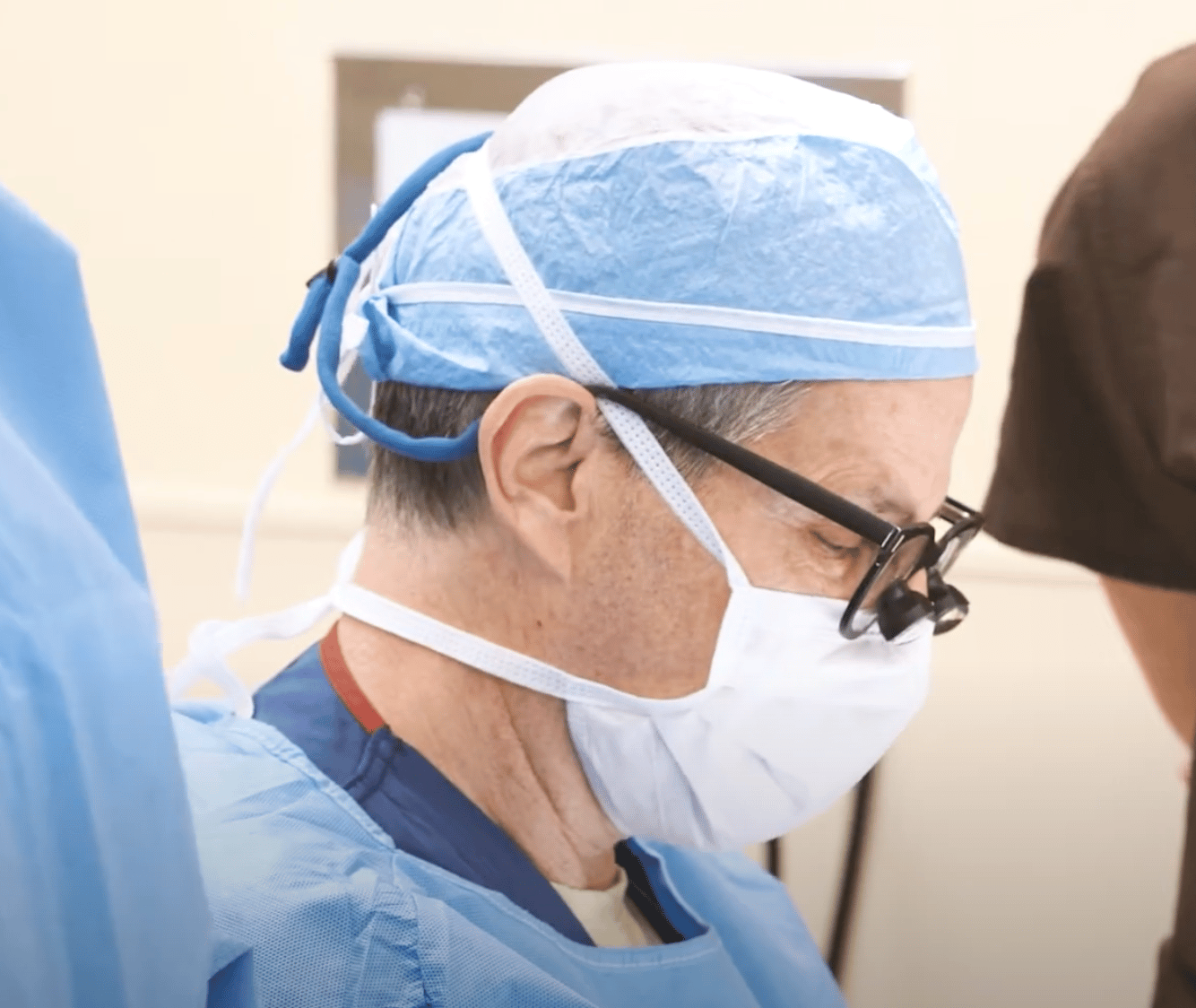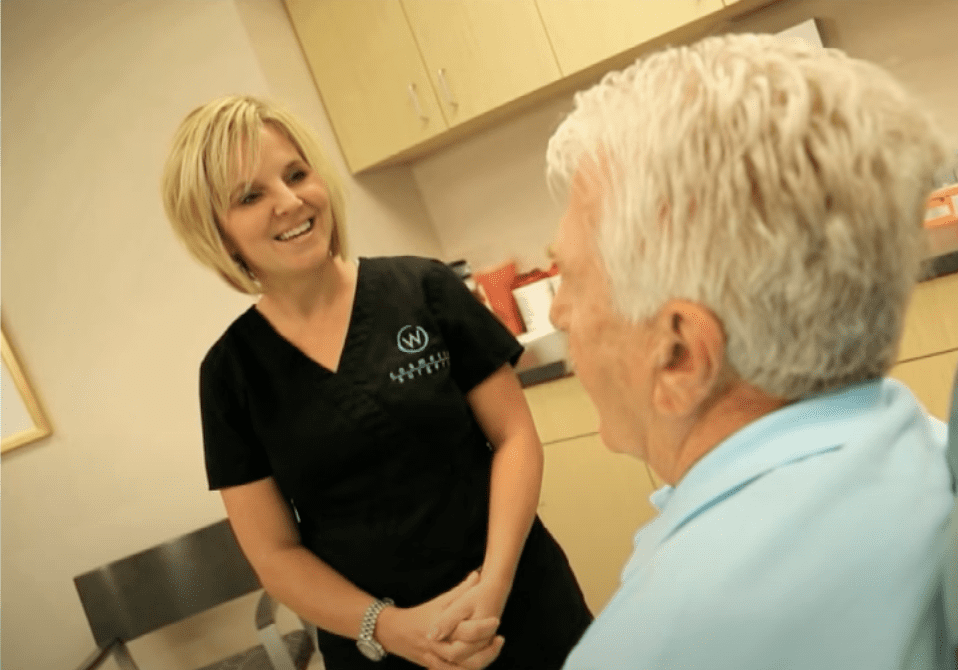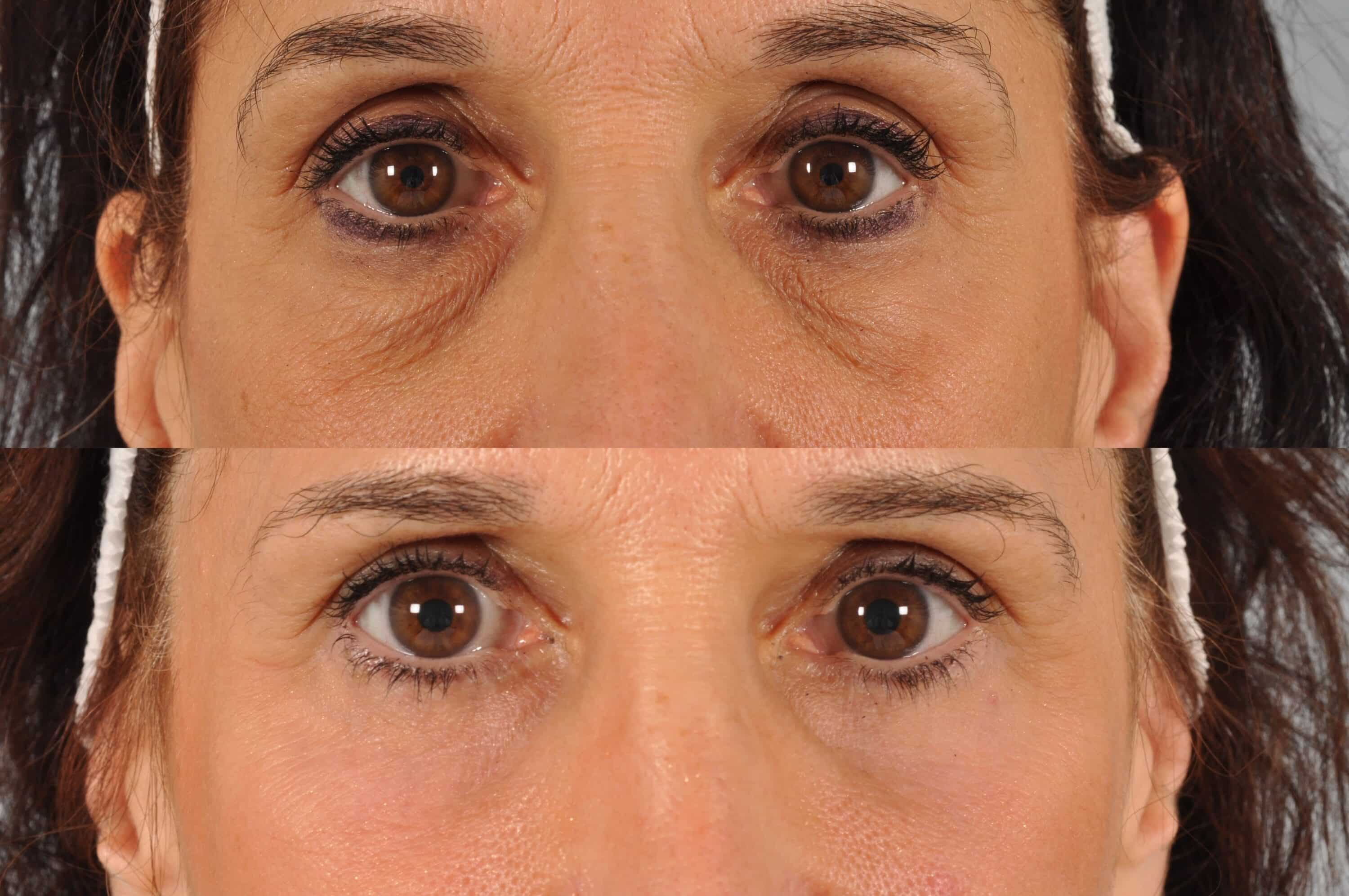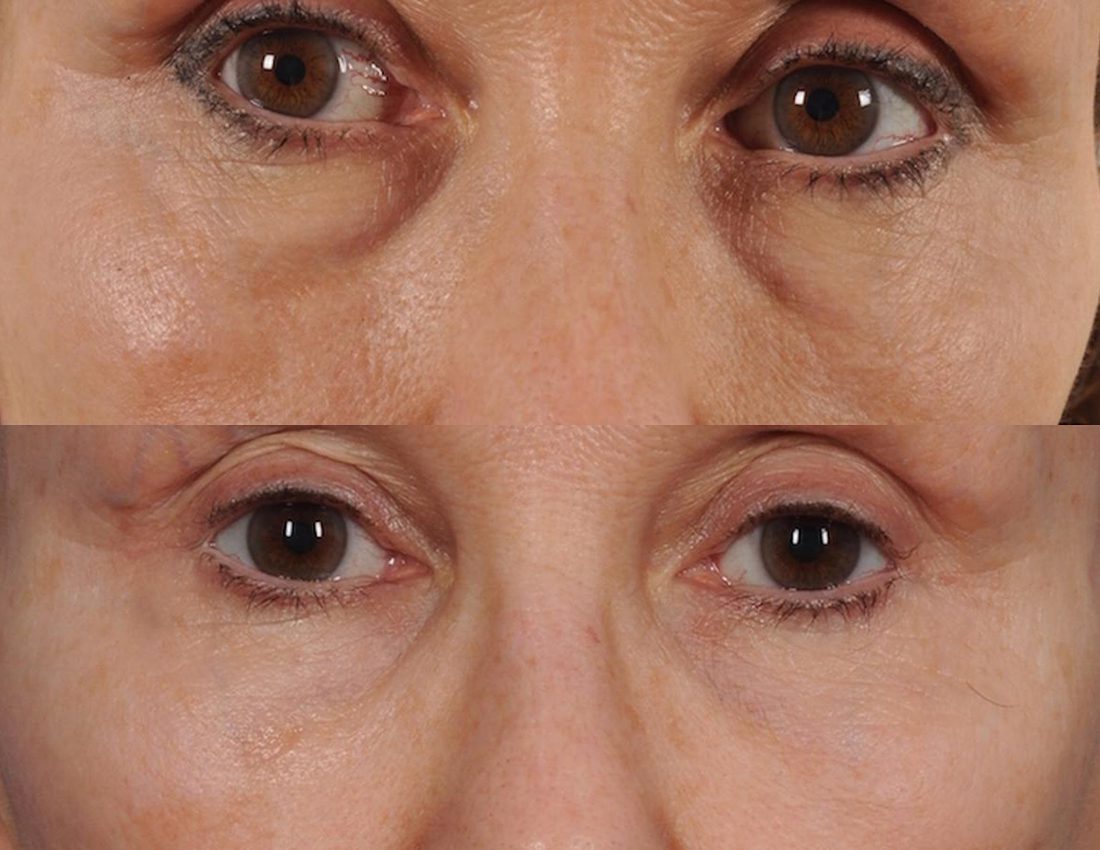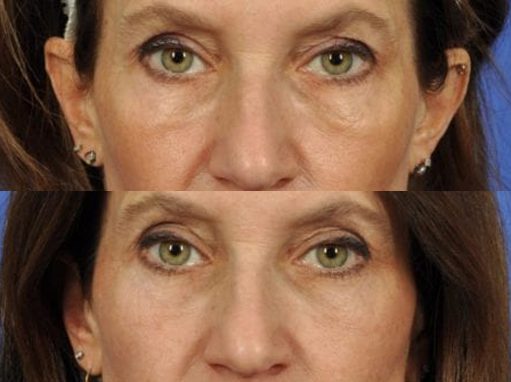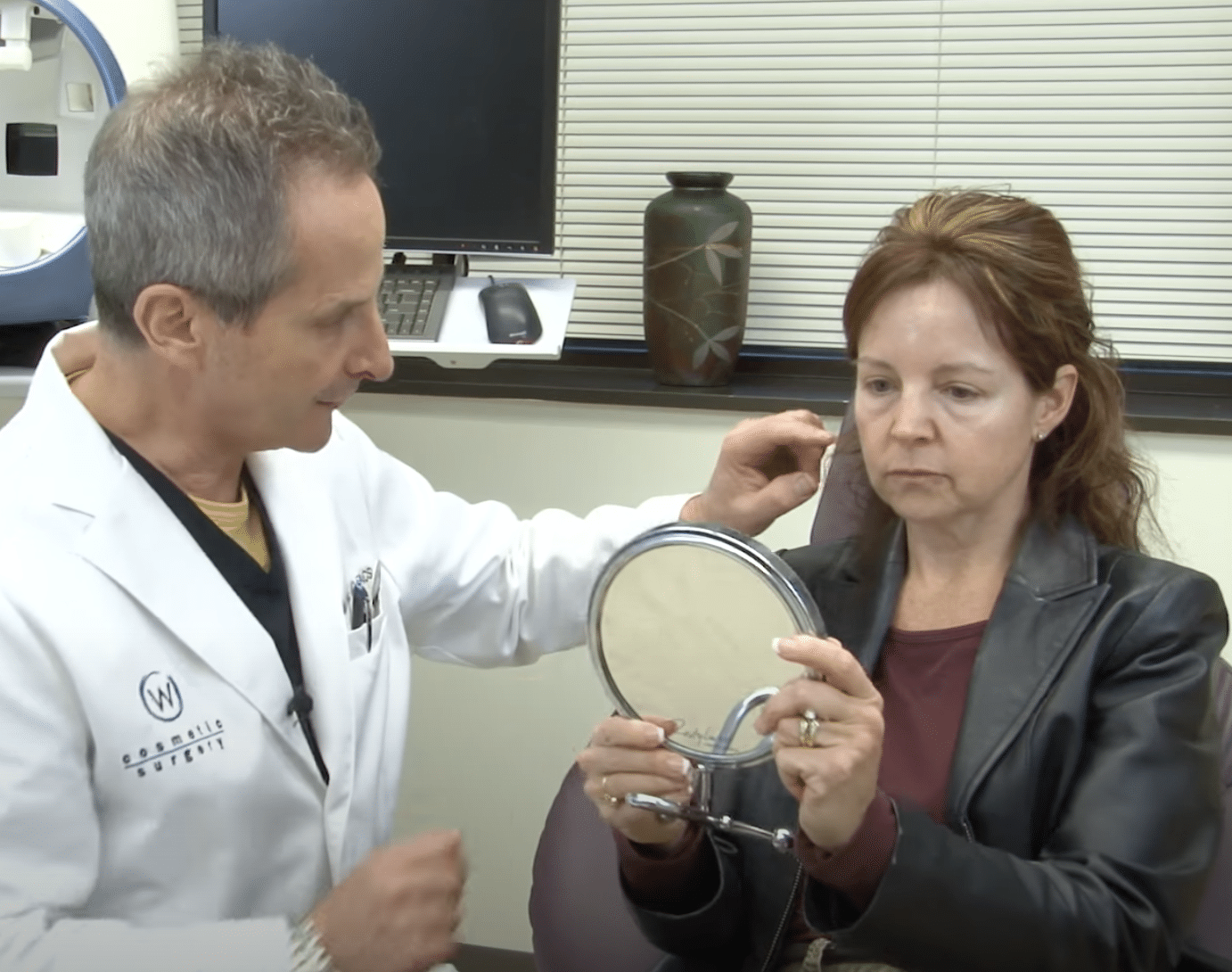FESTOON EYE TREATMENT & SURGERY
Festoons are fat puffy excesses that occur above the upper jaw bone. Festoons are areas of swelling that occur in the middle of the cheek. For this reason they are often called “midcheek mounds” or “midmalar mounds”. Patients with festoons often come to us saying they have severe under eye bags.
WHAT ARE FESTOONS?
Festoons — also known as mid-cheek mounds, malar bags, or malar festoons — are swollen bags that appear beneath the lower eyelid and around the cheek. They are puffs of fullness that occur in the middle of the cheek, like a “puddle,” where the eye-closing muscle meets the smiling muscle.
If you develop festoons, it can cause an unhealthy appearance. In addition, festoons can bump up against your glasses, causing extreme discomfort and self-consciousness.
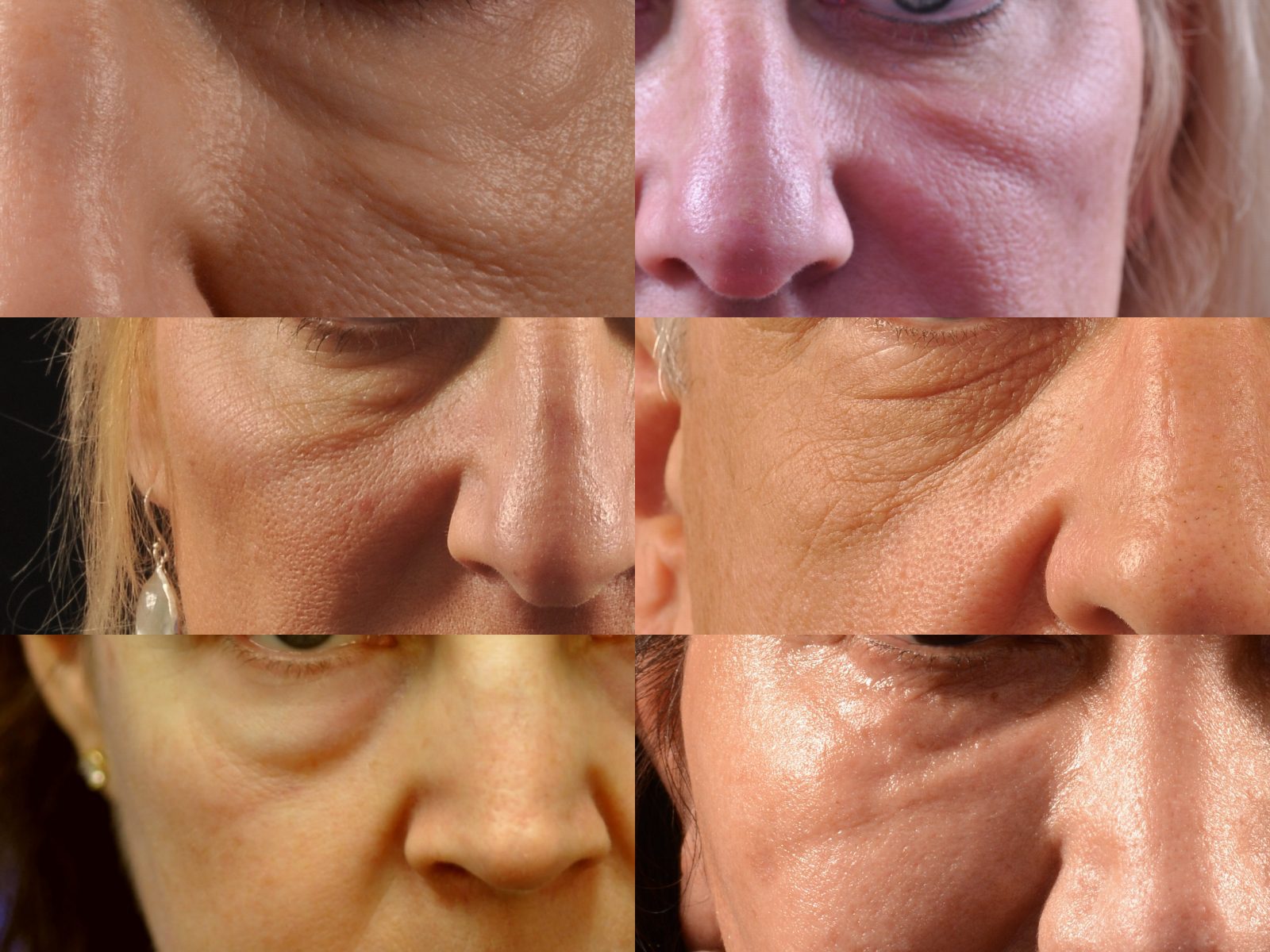
The Dr. Wulc Difference
Learn how Dr. Wulc brings aesthetics, experience, science and surgery together to achieve your desired concept of beauty.
WHAT CAUSES FESTOONS UNDER YOUR EYES?
Malar bags or festoons are not a result of aging. Anatomically, the bottom of the festoon represents an area — called a ‘septum’ — where the tissues that close the eye come into contact with tissues that elevate the mouth, allowing us to smile and give expression to our lower faces.
This septum and the tissues above it can swell with varying conditions, including:
- Hereditary causes. Festoons can be seen at a very young age in those who inherit them from one side of the family.
- Thyroid issues. Imbalance thyroid levels or a history of autoimmune thyroid disease (Hashimoto’s thyroiditis) can cause festoons. Often other signs like loss of the outer part of the eyebrow may be present. They rarely improve with normalization of thyroid function.
- Rosacea. Treated or untreated, this inflammatory skin condition can cause congestion of the veins and lymphatics that drain the eye and cause intermittent swelling and festoons.
- Sleep apnea and sleep apnea treatment. For unknown reasons, this area is prone to swelling in those whose blood carbon dioxide levels become elevated at night when their respirations slow. In addition, a sleep apnea mask can put pressure on the cheeks, resulting in an increase in swelling and an exacerbation of the festooning.
- Hylalouronic Acid (HA) Fillers. The most common cause of festooning we see now is the use of HA fillers under the eyes or cheeks, presumably to improve the appearance of the eyes. These fillers remain in place for years and gum up lymphatic flow, and they may migrate making festoons apparent. Often a patient will go to a provider who will offer more filler as a means of treatment of the festoon. This never works and usually makes the situation worse—and the patient more desperate to find a solution—or makes the patient despair about ever finding one.
- Smoking and excessive salt intake. These can worsen the festoon, particularly in the morning when the head lies below the heart and the skin swells.
Under eye bags and festoons almost always benefit from aggressive treatments. Dr. Allan Wulc is a pioneer in the treatment of festoons. He offers patients in Philadelphia—and nationally– effective and innovative treatments. If the festoons are moderate, patients can profit from radiofrequency microneedling treatments. We have presented our technique at national aesthetic meetings and are preparing the largest series in the country looking at this treatment to reduce festoons.
BENEFITS OF UNDER EYE AND FESTOON SURGERY
Many patients are extremely self-conscious about malar bags and have tried dozens of topical remedies with little success. Once bags on bags have formed, cosmetic surgery or other aesthetic treatments may be the only remaining means of effectively controlling the festoons. Patients seek all sorts of treatments in med spas and from plastic surgeons in an effort to rid them of festoons, yet very few surgeons can effectively eliminate them. Many patients that we see have had several failed treatments before coming in for more definitive therapy.
WHAT IS OUR FESTOON TREATMENT PLAN?
The W Cosmetic Preferred Method
Luckily, under eye bags and festoons can almost always be repaired or improved with the right professional treatments. Dr. Allan Wulc, a board-certified plastic surgeon at W Cosmetic Surgery™, is a pioneer in the treatment of festoons.
He offers patients in Philadelphia — and nationally — effective and innovative treatments. Some options include:
- Microneedling. If the festoons are moderate, patients can profit from radiofrequency microneedling treatments.
- Our specialty procedure, which is reserved for patients with more severe festoons, combines microdroplet liposculpture with dual erbium laser resurfacing.
- Doxycycline and tetracycline injections. Recently, these injections have become popular and work well, especially if used more than once.
- Laser Resurfacing. Laser skin resurfacing helps to improve the skin quality in the area and restore a firm and supple look and is useful primarily to shrink and ultimately resolve the festoon.
In our hands, a combination of lower blepharoplasty, microdroplet liposculpture, and dual erbium laser resurfacing has been successful in treating many of our patients and providing lasting results.
OTHER FESTOON TREATMENT OPTIONS
- Blepharoplasty. During blepharoplasty, incisions are made in the natural creases of the eyelids and fat and skin are repositioned, tightened, and removed when necessary. Despite being described as effective, it rarely results in improvement of the festoon, and sometimes has inadvertent consequences like causing a droop of the lower lids.
- Direct Excision. Direct excision of the malar festoon leaves a conspicuous scar at the orbital margin. The reason that this scar is so obvious is that the skin that is removed at the top is thin eyelid skin and the skin at the bottom of the removal is thick sebaceous cheek skin making the resulting line obvious and sometimes very unnatural. Although sometimes used to treat festoons, direct excision under eye bag surgery creates a conspicuous scar at the orbital margin.
- Liposuction. A classic procedure for removing fat through small incisions, liposuction techniques have advanced a great deal in the last few decades. Gentler techniques allow sensitive areas like the eyes to be treated. However, this technique often produces inconsistent results and has not worked well for us in the treatment of festoons.
- Lower Lid Filler Injections. Fillers and Botox are often used to help reduce under-eye bags and create a more youthful appearance. While fillers are excellent for treating lines and wrinkles, fillers almost always make festoons worse because they increase congestion of the lymphatics. Hyaluronic acid-based fillers are hydrophilic (they love water) and often will draw more fluid into the malar bags, making them more prominent.
Our practice offers Filler Correction as the first step in rehabilitation of festoons.in the event of a previously botched lower lid filler treatment. Dr. Wulc will examine the work done and decide if a lower lid filler removal is necessary.
WHO IS AN IDEAL CANDIDATE FOR FESTOON TREATMENT?
Men and women who struggle with “bags on bags” in the lower lids may be good candidates for under eye bags surgery. Healthy adults with realistic expectations are the best candidates for festoons surgery. Fortunately, our treatment is applicable to most patients with this condition. Prior to the surgery, patients will meet with us to discuss their goals and expectations.
ARE THERE ANY RISKS FROM A FESTOON TREATMENT?
As with any surgery, there are minor risks involved with festoon treatment surgery. Patients may experience scarring, infection, anesthesia complications, or a poor cosmetic outcome. These complication can be reduced by working with a board-certified surgeon who uses proper techniques such as Dr.Wulc.
WHY CHOOSE DR. ALLAN WULC TO TREAT YOUR FESTOONS?
He is Board Certified in
- Ophthalmology by the American Board of Ophthalmology
- Plastic Surgery by the American Board of Physician Specialties
- Facial Cosmetic Surgery by the American Board of Cosmetic Surgery
- A Diplomate of the American Society of Ophthalmic Plastic and Reconstructive
Surgeons
We have extensive experience and a variety of techniques to take care of this problem!
MALAR BAGS CONSULTATION
Dr. Wulc and our nurses meet with every patient in a one-on-one consultation at his Philadelphia area practice before creating any surgical plan. This allows us the opportunity to get to know the patient’s goals, perform an exam of the eye area, and ensure that the patient is healthy enough for surgery. In some cases, more conservative treatments such as RF microneedling alone may be suggested.
If Dr. Wulc believes that you are a good candidate to have your festoons addressed, we will go over our technique in detail and answer any questions you may have. If not, we will suggest some alternative options. You should come prepared with a list of medications and we encourage you to write down your questions before our meeting.
FAQs About Festoons & Festoon Treatment
What will my recovery look like?
Patients who undergo our festoon treatment may experience bruising and swelling after surgery. Absorbable sutures are used when sutures are necessary. Patients notice results as the swelling and bruising fades, a week or so after surgery. We provide post-operative care instructions for how to speed up the healing process using light and lasers in or office.
Will I be able to wear contacts after surgery?
After eyelid surgery, you will typically need to wait at least several days before wearing contacts again as the eye area heals. Dr. Wulc will be able to advise you on your limitations post-surgery and give you a timeline for resuming your normal habits, including wearing contacts.
Do topical treatments work for malar bags?
Most creams and topical treatments are ineffective for treating malar bags. Surgical intervention is almost always necessary for meaningful results.
How long do I have to wait to exercise again?
Dr. Wulc will give each patient instructions for their recovery period, including exercise guidelines. Most patients will need to wait at least a week or two, often longer, before resuming strenuous exercise.
Can I combine malar bag surgery with other procedures?
Yes. Many patients are interested in comprehensive rejuvenation and wish to improve several signs of aging at once. Patients with loose or excess skin, wrinkles, and excess fat may choose to combine malar bags treatment with procedures like upper eyelid surgery or fillers for unwanted wrinkles. Some doctors excise malar bags. Malar bag excision is always associated with a scar. The scar heals but not always inconspicuously. It is not our preference and we rarely excise festoons. We find other treatments to be sufficient in the treatment of even the most severe. These include radiofrequency external treatments, Thermitight, Renuvion, midface lift and, most commonly, laser resurfacing.

Discover your possibilities.
Schedule a consultation
Saturday - Sunday Closed


